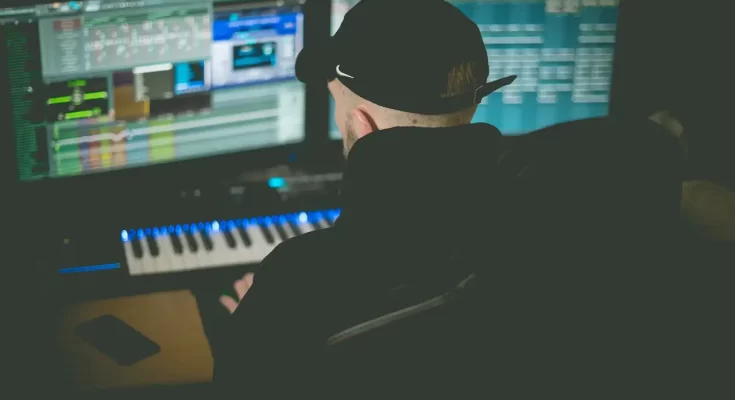Are you looking for music production tips to up your game and produce professional-sounding tracks?
Look no further. In this article, we’ll share some expert tips and tricks for music production.
From choosing the right equipment to creating a soundproof recording space, we’ll provide everything you need to know to take your music to the next level.
So grab your instruments and let’s get started!
What is Music Production?
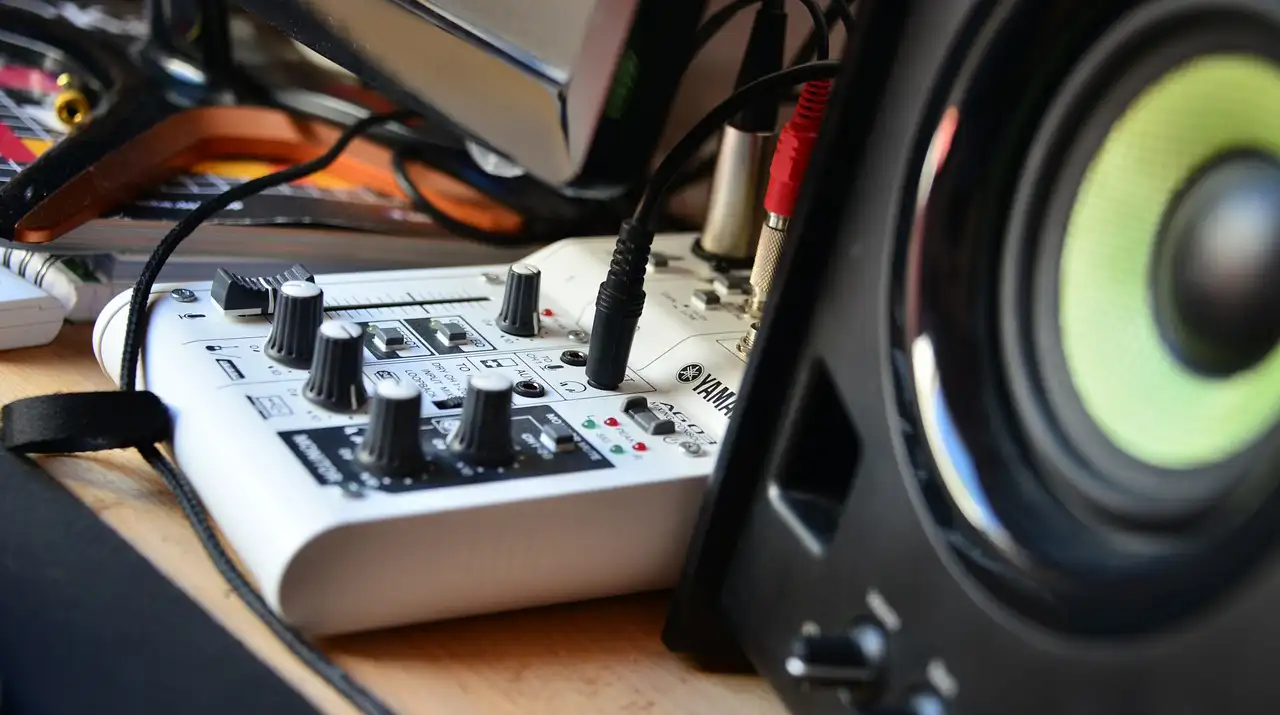

For starters, you need to understand what music production is.
Music production is the process of creating a finished musical recording by combining the various elements of a song, such as a melody, lyrics and instrumentation.
This process typically involves recording and mixing the different musical elements using specialized software and equipment to create a polished, professional-sounding track.
Producers are responsible for overseeing the entire music production process, from pre-production to post-production. They ensure that the final product meets the artist’s vision and the highest standards of quality.
In this article, you will get an insight into various music production topics including:
Basics of Music Production
Understanding of Music Theory
Choosing the Right Equipment
Setting Up a Recording Space
Establishing a Workflow
Utilizing Digital Audio Workstations (DAWs)
Pre-Production Tips
Creating a Game Plan
Gaining Inspiration
Utilizing Loops
Re-Recording Tracks
Adding Effects
Recording Tips
Selecting the Right Microphone
Setting Up Recording Levels
Recording Multiple Takes
Utilizing Noise Reduction Tools
Doing Post-Recording Edits
Mixing Tips
Balancing the Volume
Utilizing EQ
Applying Compression
Creating Stereo Images
Mastering Tips
Basics of Music Production
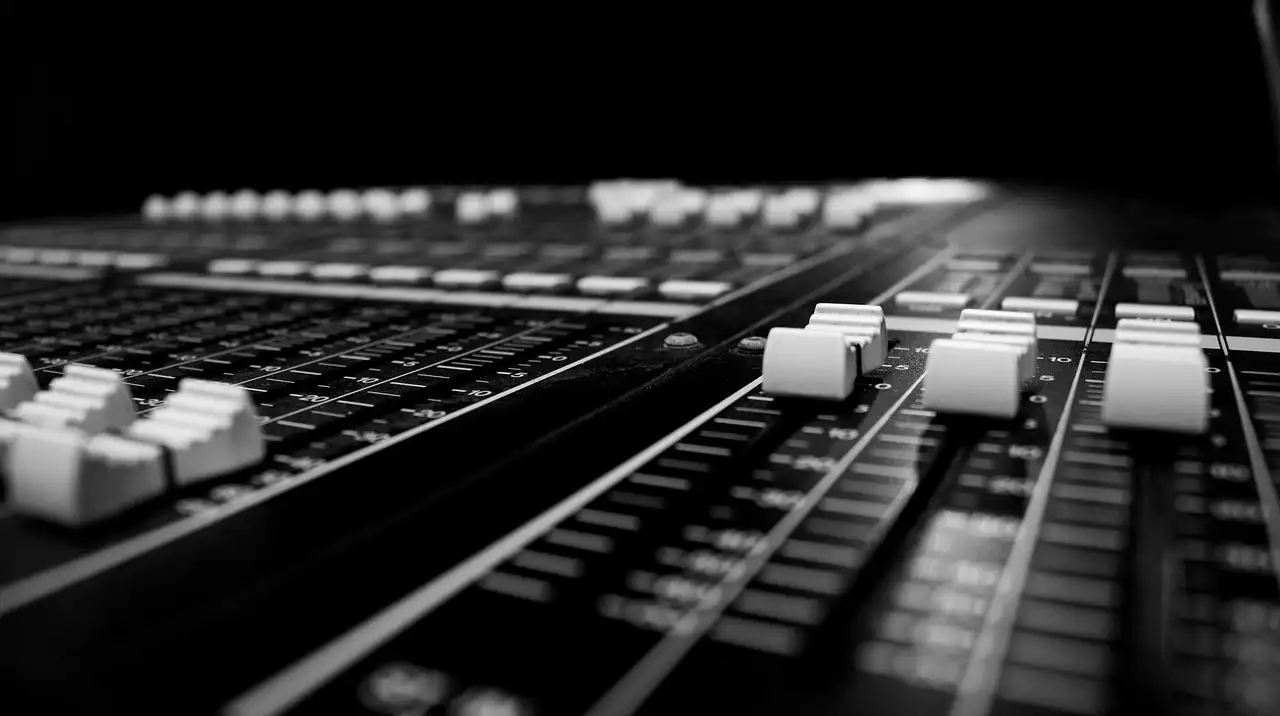

Understanding of Music Theory
Music theory is the study of the language and structure of music.
It provides a foundation for understanding how different musical elements, such as melody, harmony, and rhythm, work together to create a cohesive composition. This is important when making music.
While it’s not necessary to be a music theory expert to produce music, having a basic understanding of these concepts can greatly enhance your ability to create and manipulate sounds in the production process.
Choosing the Right Equipment
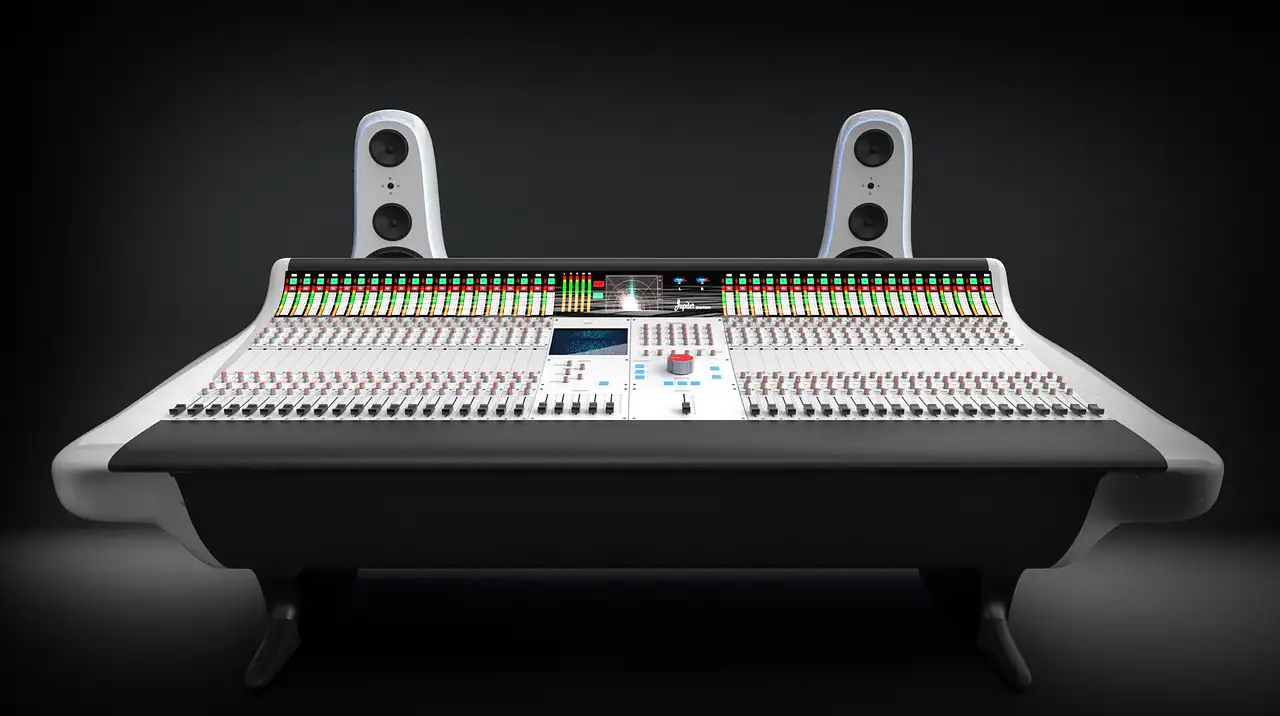

One of the key elements of music production is choosing the right equipment for the job.
This can include things like microphones, headphones, speakers, and digital audio workstations (DAWs).
It’s important to research and compare different options to find the equipment that best suits your needs and budget.
Consider factors like sound quality, compatibility with your existing setup, and the availability of technical support.
Setting Up a Recording Space


Creating a dedicated recording space is essential for producing high-quality music.
The space should be quiet, free from distractions and well-suited for recording and mixing audio.
Ideally, it should also be soundproof to prevent outside noises from interfering with your recordings.
Consider factors like the size and shape of the space, the type of flooring and wall coverings. Also look into the placement of furniture and equipment to create the optimal recording environment.
Establishing a Workflow
Developing a consistent and efficient workflow is crucial for successful music production.
This can include things like setting up a schedule for recording and mixing, organizing your files and folders and establishing a process for reviewing and approving tracks.
Having a clear workflow can help you stay focused and productive.
It ensures that your projects move forward smoothly and efficiently.
Utilizing Digital Audio Workstations (DAWs)


Digital audio workstations (DAWs) are software programs that allow you to record, edit, and mix audio.
They typically include a range of features and tools for creating and manipulating sounds, such as virtual instruments, effects processors, and mixing consoles.
Familiarizing yourself with the features and capabilities of your DAW can greatly enhance your music production skills and help you create professional-sounding tracks.
Pre-Production Tips
Pre-production is an essential part of the music creation process, as it allows you to plan and organize your ideas before diving into the actual recording and production.
By following these pre-production tips, you can ensure that your project runs smoothly.
Creating a Game Plan
Before you start working on your music project, it’s important to have a game plan.
This means taking some time to brainstorm and organize your ideas. You have to figure out what you want to achieve with your music.
Some questions to ask yourself during this process include:
- What is the overall concept of the project?
- What is the message or emotion that you want to convey with your music?
- Who is the target audience for your music?
- What is the genre or style of your music?
- What instruments or sounds will you use?
- What is the structure and flow of your songs?
By answering these questions, you can clearly understand what your project will entail and how to move forward.
Find Inspiration
Once you have a clear idea of what you want to create, it’s time to look for inspiration.
This can be done in a variety of ways, such as listening to other music, watching movies or TV shows, reading books, or even just taking a walk outside.
It’s important to keep an open mind and be receptive to new ideas, as inspiration can come from the most unexpected places.
Utilizing Loops
In pre-production, it can be helpful to utilize loops. A loop is a repeating section of audio, such as a drum beat or a bass line, that can be played over and over to create a foundation for your song.
By using loops, you can quickly and easily try out different ideas and see how they fit together, without having to spend a lot of time recording and editing individual songs.
Recording Tips
Recording is an essential part of the music creation process, as it allows you to capture your ideas and performances in a way that can be shared with others. By following these recording tips, you can ensure that your recordings have the best possible quality and that they accurately represent your music.
Selecting the Right Microphone
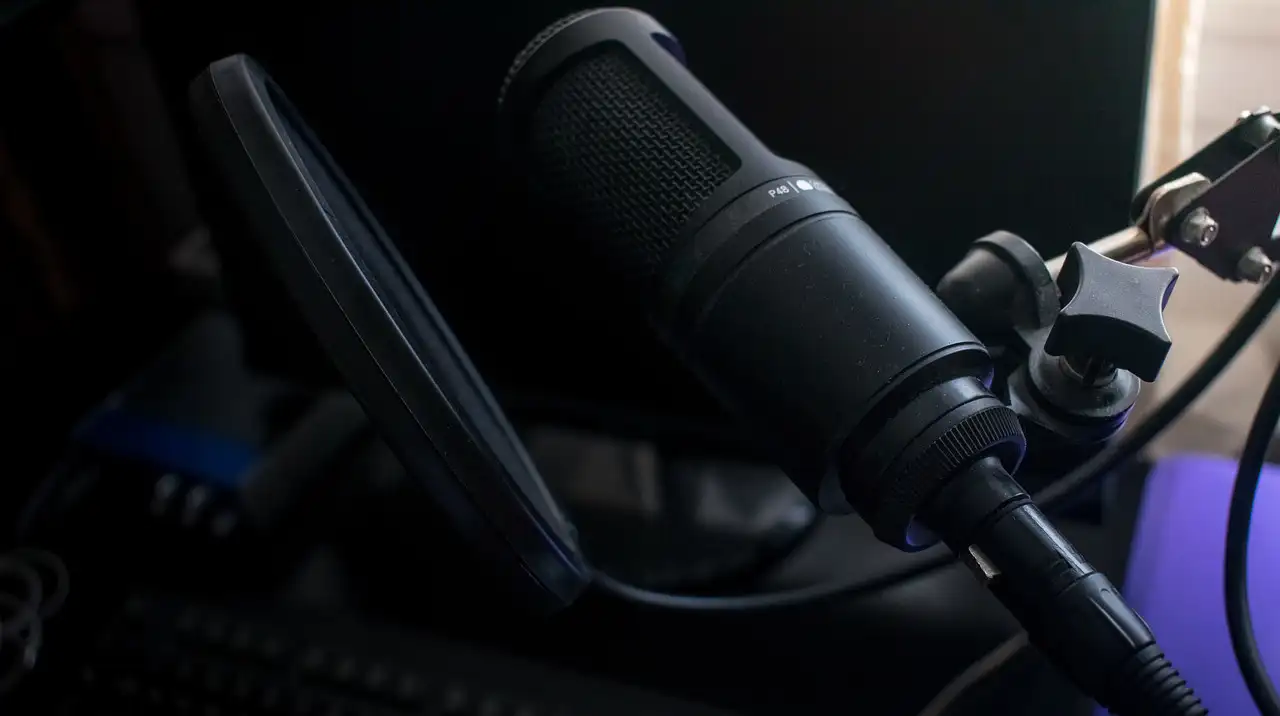

One of the most important factors in achieving high-quality recordings is selecting the right microphone.
Different microphones are designed for different purposes and have different characteristics, so it’s important to choose one that is suitable for your specific needs.
For example, if you are recording vocals, a large-diaphragm condenser microphone is a good choice. It is sensitive and provides a smooth and natural sound.
If you are recording an instrument, such as a guitar or a piano, a dynamic microphone is a better option, as it is more durable and can handle louder sounds.
Setting Up Recording Levels
Once you have selected the right microphone, the next step is to set up the recording levels.
This means adjusting the gain on your recording device, as well as the volume of the instrument or voice that you are recording.
It’s important to set the levels correctly, as this can greatly affect the quality of your recordings.
If the levels are too low, the recording will be quiet and difficult to hear.
If the levels are too high, the recording will be distorted and unpleasant to listen to.
To set the levels correctly, it’s a good idea to use a peak meter or a level meter on your recording device.
This will show you the volume of the signal that is being recorded, and allow you to adjust the levels accordingly.
Recording Multiple Takes
Another tip for achieving high-grade recordings is to record multiple takes.
This means recording the same performance several times and then choosing the best take for the final version of your song.
By recording multiple takes, you can ensure that you capture the best possible performance and that you have a backup in case something goes wrong with the first take.
It’s also a good idea to record multiple takes from different angles or perspectives. For example, if you are recording a band, you could record each instrument separately, as well as a group performance.
This will give you more options when it comes to mixing and editing the tracks.
Utilizing Noise Reduction Tools
During the recording process, it’s common for unwanted noise to be picked up by the microphone.
This could be background noise from the environment, such as traffic or people talking. It could be noise from the recording equipment itself, such as a hum or hiss.
To remove this noise, you can use noise reduction tools. These are software programs that are specifically designed to remove unwanted sounds from recordings.
There are many different noise reduction tools available, and they all have different features and capabilities.
Some common options include noise gate, which filters out low-level sounds, and spectral editing, which allows you to remove specific frequencies from the recording.
Doing Post-Recording Edits
After you have recorded all of your tracks, it’s time to move on to the post-recording edits.
This is where you will combine and arrange the tracks, and add any effects or processing that you want.
There are many different editing tools and techniques that you can use, such as cutting and pasting sections of the recording, or using automation to adjust the levels or panning of the tracks.
It’s important to take your time and experiment with different edits, as this can greatly affect the final outcome of your recording.
Mixing Tips
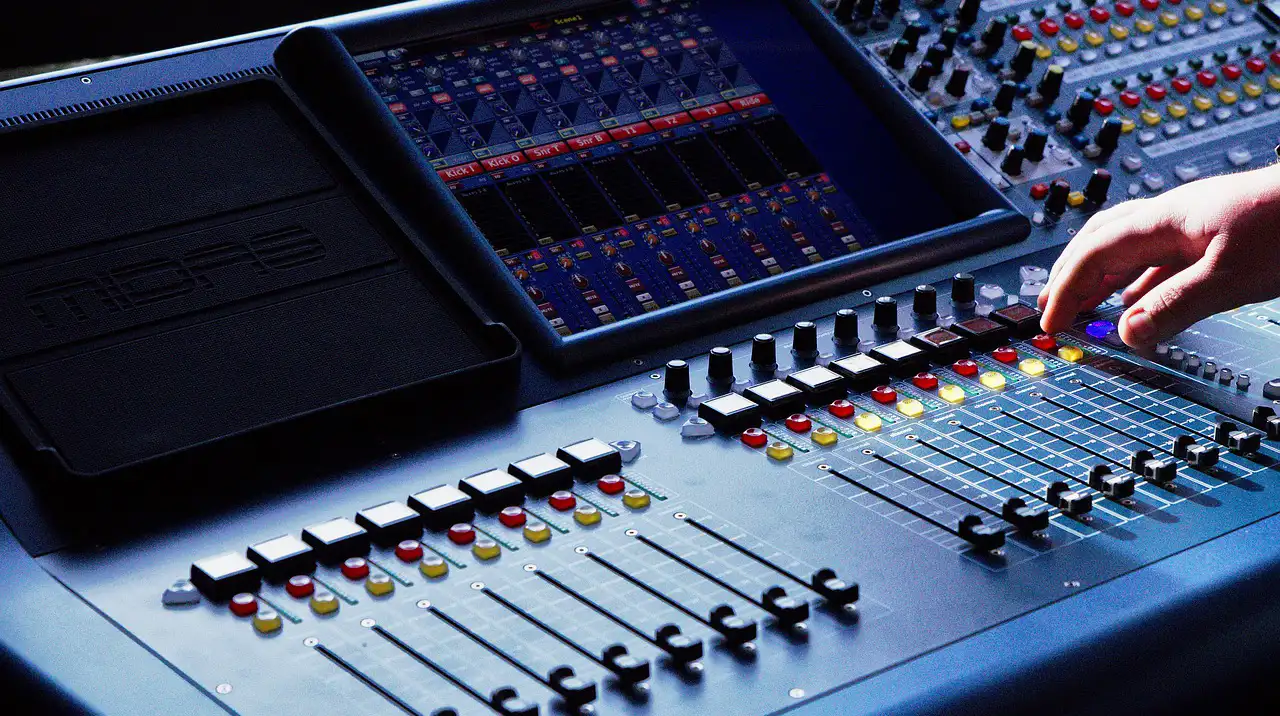

Balancing the Volume
One of the most crucial steps in the mixing process is balancing the volume of each individual track. For new producers, this can be a daunting task.
It involves setting the levels of each track so that they are neither too loud nor too quiet in relation to one another.
This can be achieved by using a mixing board or digital audio workstation (DAW) to adjust the levels of each track.
Utilizing EQ
EQ, or equalization, is a powerful tool in the mixing process. It allows you to adjust the frequency content of each track, helping to create a balanced mix.
For example, if a track has too much bass, you can use a low-cut filter to remove some of the low frequencies.
On the other hand, if a track lacks presence, you can boost its mid and high frequencies to make it stand out in the mix.
Applying Compression
Compression is another essential tool in the mixing process. It helps to control the dynamic range of a track, making loud sounds quieter and quiet sounds louder.
This can be especially useful for vocals or instruments like drums, which often have a wide dynamic range. By applying compression, you can make these sit more evenly in the mix.
- Creating Stereo Images
Creating a stereo image is all about creating a sense of space and depth in your mix.
This can be achieved by panning tracks left or right, using reverb to create a sense of distance, and utilizing stereo imaging effects like widening or narrowing the stereo field.
By creating a well-defined stereo image, you can add dimension and depth to your mix.
Adding Reverb
Reverb is a crucial element in any mix. It helps to create a sense of space and can add a sense of realism to a recording.
There are many different types of reverb, each with its own unique characteristics.
Choosing the right reverb and setting the appropriate amount can greatly enhance your mix.
With practice and patience, you’ll be able to create professional-sounding mixes in no time.
Mastering Tips
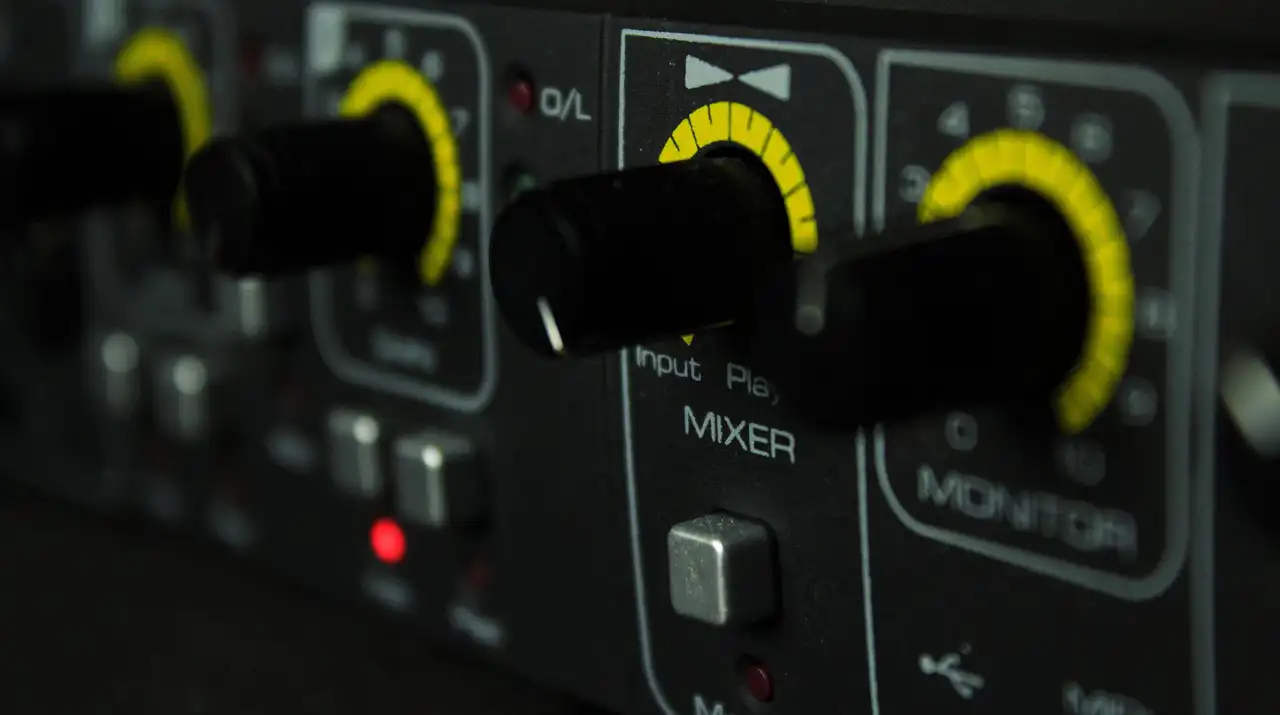

Mastering is the final step in the audio production process, and it involves a number of techniques and tools to ensure that your music is ready for release.
Here are some key tips for mastering your tracks, including how to utilize limiting, finalize your EQ, add final effects, set the overall volume, and make the final adjustments.
Utilizing Limiting
Limiting is a crucial tool in mastering, and it’s used to prevent the loudest parts of your track from clipping or distorting. Do this to improve your music.
By setting a maximum threshold for the loudest parts of your track, you can ensure that your track stays within a certain dynamic range and sounds clear and punchy.
To utilize limiting effectively, start by setting the threshold on your limiter to the maximum level that you want your track to reach. Then, carefully adjust the attack and release settings to ensure that the limiting is applied smoothly and transparently. You can also adjust the gain to boost the overall level of your track, but be careful not to overdo it, as excessive gain can cause distortion and loss of clarity.
Finalizing the EQ
EQ is another important tool in mastering, and it’s used to balance the frequencies of your track and give it a more cohesive and polished sound.
In the mastering stage, you’ll want to focus on fine-tuning the EQ to achieve a smooth and balanced frequency response across the entire track.
Start by using a spectrum analyzer to identify any frequency ranges that are overly prominent or lacking in your track.
Then, use a parametric or graphic EQ to make subtle adjustments to these frequencies, boosting or cutting as needed to achieve a balanced sound. Be careful not to overdo it, as excessive EQ adjustments can cause your track to sound unnatural or artificial.
Adding Final Effects
In the mastering stage, you can also add final effects to your track to give it a unique character and polish.
Common effects used in mastering include reverb, delay, and chorus, which can add depth, space, and texture to your track.
When using effects in mastering, it’s important to use them sparingly.
Too much effect can cause your track to sound cluttered and muddy, so it’s best to use just a small amount to add subtle enhancement to your track.
You can also experiment with different effect settings to find the right balance for your track.
Setting the Overall Volume
One of the key tasks in mastering is setting the overall volume of your track.
This involves adjusting the level of your track so that it sounds loud and punchy without clipping or distorting.
To set the overall volume of your track, start by using a meter to monitor the level of your track in real-time.
Then, carefully adjust the gain on your mixer or DAW to bring the level of your track up to the desired level.
Be sure to leave some headroom so that your track doesn’t clip or distort and be careful not to overdo it. Excessive gain can cause your track to sound distorted and harsh.
Making the Final Adjustments
After you’ve applied limiting, EQ, effects, and set the overall volume of your track, it’s time to make the final adjustments.
This involves listening to your track carefully and making any final tweaks to ensure that it sounds its best.
When making the final adjustments, it’s important to listen to your track on a variety of different systems, including headphones, speakers, and car stereo systems.
This will give you a better idea of how your track will sound in a variety of different listening environments.
You can also use a reference track to compare.
Additional Music production tips
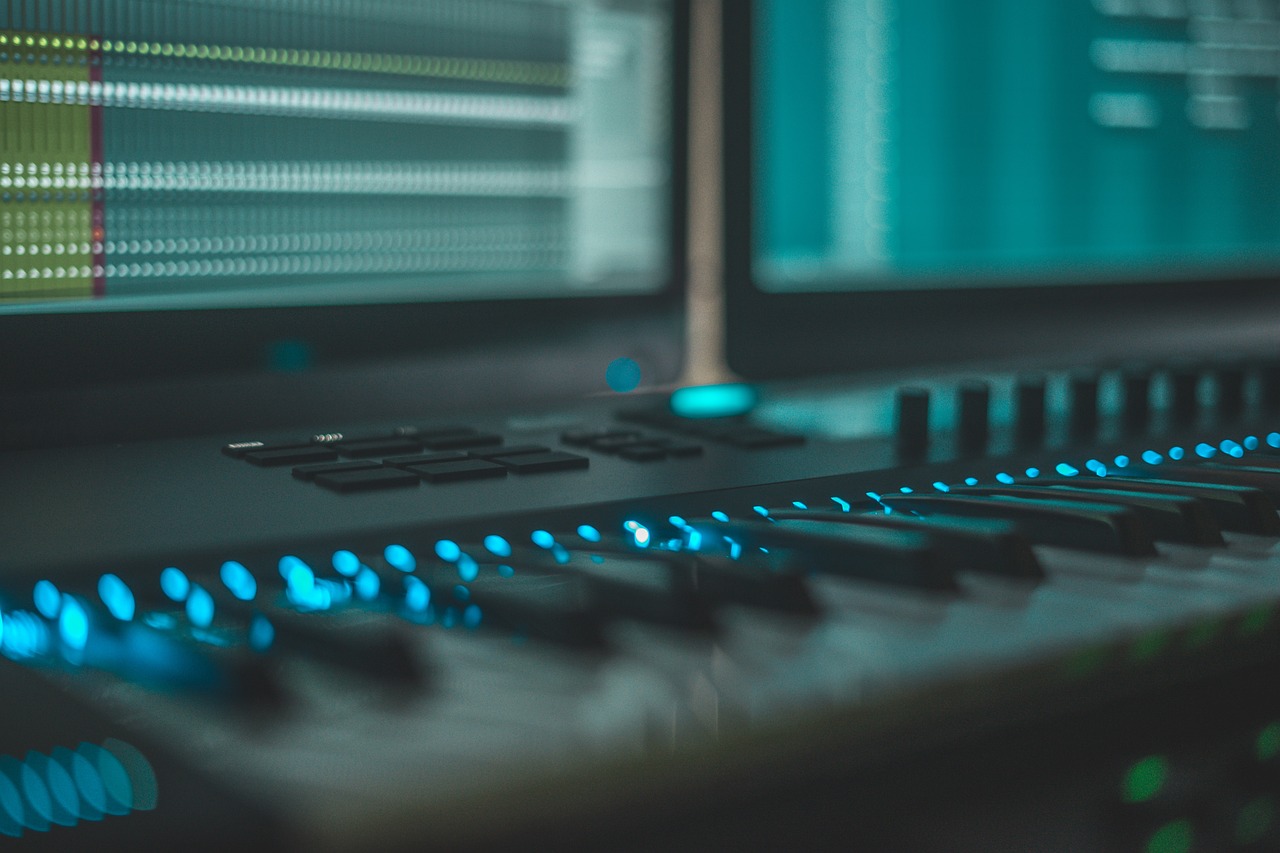
Widen the range of music you listen to
To improve your creativity, it’s important to expose yourself to new and interesting sounds and ideas.
One way to do this is to listen to a wide range of music genres and styles.
Active listening is essential


Another important habit to build is active listening. This means listening to music with full focus and attention, paying attention to every little sound, movement, and transition.
This type of listening is different from passive listening, which is when we have music on in the background while doing something else.
Active listening has several benefits for artists. It can provide endless inspiration, help you learn new techniques and ideas that can’t be found in books or tutorials, and quickly improve your musical ear.
Look for feedback from others
It’s important to get feedback on your early work from other producers, as this will help you understand where you may be falling short.
It’s hard to listen to your own music objectively, so getting the perspective of others can be very valuable.
In addition to feedback from other producers, it can also be helpful to get feedback from non-producers.
These people may not have the same technical expertise, but they can provide valuable insights on how the music makes them feel and whether it is engaging or not.
By seeking out feedback from a variety of sources, you can get a well-rounded view of your music and where it can be improved.
You need to learn sound design
Learning sound design is an important skill for any aspiring music producer or audio engineer. It refers to the creation and manipulation of sounds, often for use in music, film, and video game production.
To get started with sound design, it can be helpful to familiarize yourself with the tools and techniques used by professionals.
This may include digital audio workstation software, synthesizers, samplers, and other hardware and software tools.
There are many tutorials and online courses available that can help you learn the basics of using these tools.
Another important aspect of sound design is experimentation and creativity.
Try playing around with different sounds and effects, and see what interesting and unique sounds you can create.
It can also be helpful to listen to other music and sound design work to get ideas and inspiration.
Ultimately, the best way to improve your sound design skills is to practice regularly and keep learning new techniques.
As you gain experience, you will develop your own unique style and approach to sound design.
With time and practice, you can become an expert in this exciting field.
Collaboration can be key
Collaboration is an important part of the music production process, and it can have many benefits for both individual producers and the music industry as a whole.
One of the main advantages of collaboration is that it allows producers to share ideas and experiences, and learn from each other.
By working with other producers, you can learn new techniques and approaches to music production, and gain valuable feedback on your own work.
Collaboration can also help to spark creativity and inspire new ideas, leading to more innovative and interesting music.
In addition to these benefits for individual producers, collaboration is also important for the music industry as a whole.
By working together, producers can create new and exciting music that may not have been possible if they were working alone.
Collaboration can also help to foster a sense of community and support within the music industry, which can be beneficial for everyone involved.
Overall, collaboration is a crucial part of the music production process, and it can have many benefits for individual producers and the industry as a whole. By working together and sharing ideas, producers can create amazing music and learn from each other.
A highpass EQ, also known as a low-cut filter, is a common tool used by music producers and audio engineers. This type of EQ allows high frequencies to pass through, while reducing or cutting low frequencies.
Highpass EQs are often used to clean up a mix, by removing low-frequency elements that may be cluttering up the sound. For example, a highpass filter can be used to remove the rumble of a bass guitar or the boom of a kick drum, allowing the other instruments to sit better in the mix.
Make use of highpass EQs
Highpass EQs can also be used to shape the overall sound of a track. For example, by applying a highpass filter to a vocal track, you can create a brighter, more airy sound.
This can be useful for making the vocals stand out in the mix, or for creating a particular aesthetic or mood in the music.
Overall, highpass EQs are a valuable tool for music producers and audio engineers, and they can be used in a variety of ways to improve the sound of a mix.
By understanding how to use highpass filters, you can take your music production to the next level.
As a music producer, it is important to constantly learn and practice new techniques and skills. This will not only help you to improve your craft, but it will also keep your music fresh and interesting.
Learn and practice new techniques and skills
Learning new techniques and skills can help you to develop your own unique style and approach to music production.
By experimenting with different sounds, effects, and techniques, you can discover new ways of creating music that is distinct and original.
This can help you to stand out in a crowded market and build a loyal fanbase.
In addition to helping you develop your own style, learning new techniques and skills can also make you a more versatile and adaptable producer. This can be valuable in a variety of situations, such as when working with different artists or genres, or when faced with new challenges in the studio.
By having a broad range of skills and techniques at your disposal, you can be prepared for whatever comes your way.
Learn to DJ or perform live


As a music producer, learning to DJ or perform live can be a valuable skill to have. This can open up new opportunities for you, such as performing at clubs or festivals, and it can also help to increase your exposure and build your fanbase.
In addition to the practical benefits, learning to DJ or perform live can also help you to better understand the music you are creating.
By playing your music in front of an audience, you can get a sense of how it feels and how it is received, which can provide valuable feedback for your future productions.
Furthermore, performing live can also be a fun and rewarding experience in its own right. It can be exciting to watch people react to your music, and it can also be a great way to connect with other musicians and fans
Learn how to play instruments
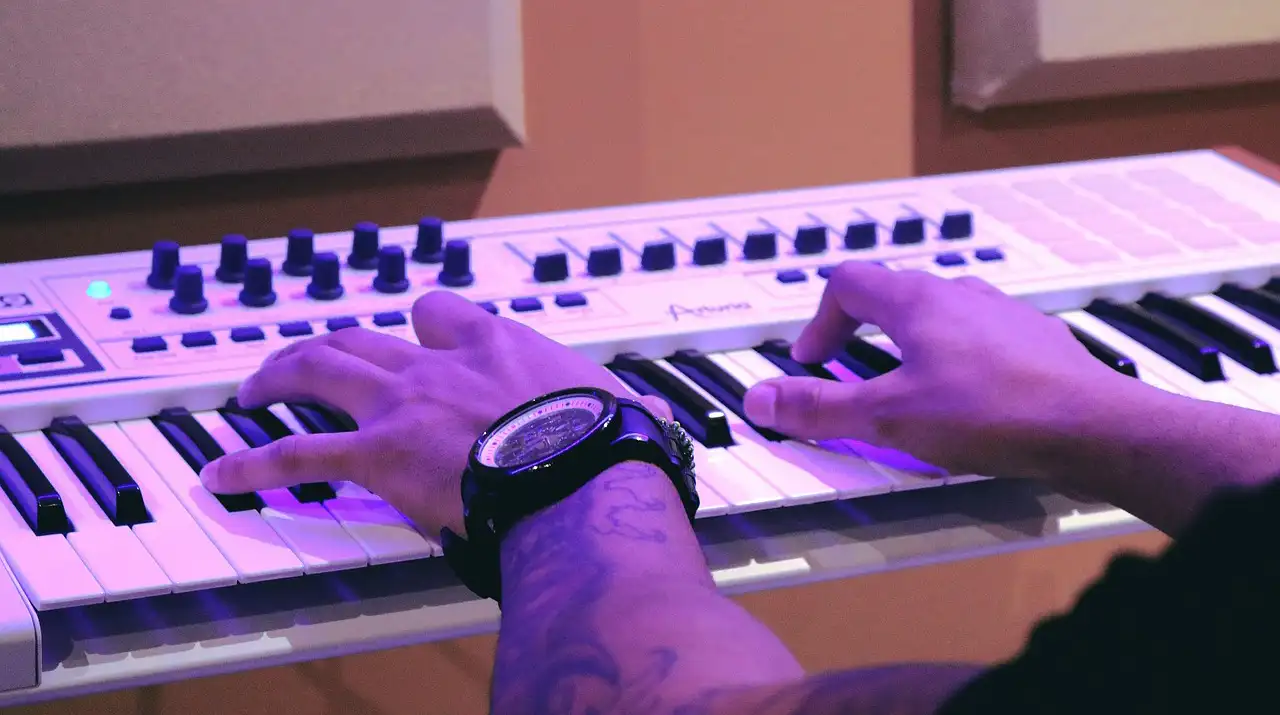

Learning to play an instrument can be a valuable skill to have. This can give you a deeper understanding of music, and it can also open up new creative possibilities for your productions.
For example, if you know how to play an instrument, you can use it to create your own sounds and samples, rather than relying on pre-made samples or loops. This can allow you to create music that is more unique and original, and it can also give you more control over the sound and feel of your tracks.
In addition to the creative benefits, learning to play an instrument can also help you to better understand the music you are working with. By understanding how an instrument works and what it is capable of, you can make more informed decisions about how to use it in your music.
Conclusion on Music Production Tips
There is no one-size-fits-all approach to music production.
However, these tips and techniques can help you get started on the right track. If you’re just starting out, take your time and experiment.
With patience and practice, you’ll be able to create the sounds you’ve always wanted.
As you gain experience, you can start to tailor your approach to your own needs and preferences.
With the right tools and a bit of creativity, you can become a successful music producer in no time.

